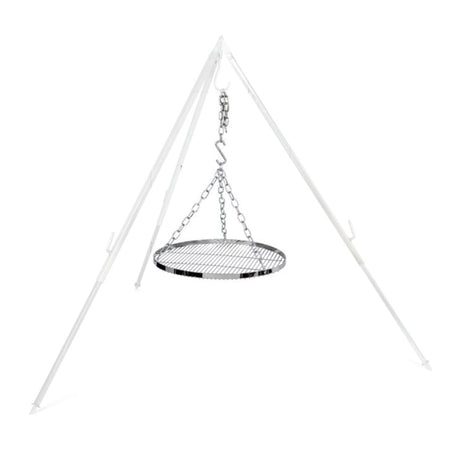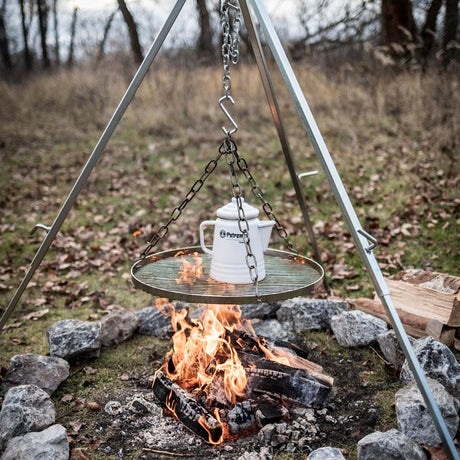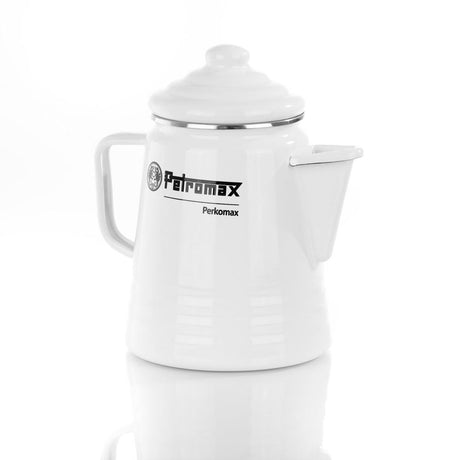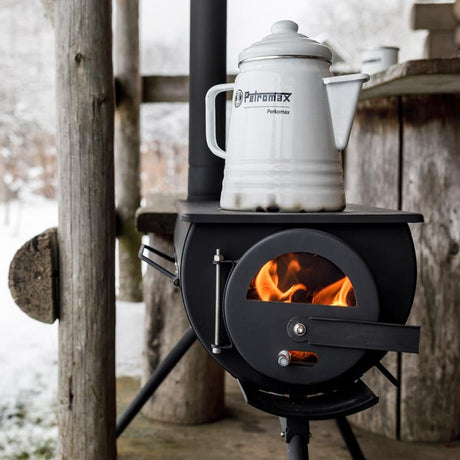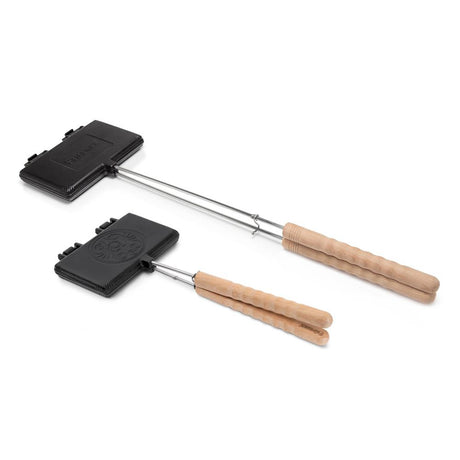Do you know this feeling? You're full of anticipation for your mountain tour, but suddenly your head is throbbing, you feel dizzy and the air seems to be getting thinner and thinner. Welcome to the world of altitude sickness. Many outdoor enthusiasts underestimate the effects of altitude - until the body suddenly goes on strike. But don't worry: if you know what to look out for, you can minimize the risk and react correctly in an emergency. In this article, you will find out how altitude sickness develops, which symptoms are typical, how you can prevent it - and what really helps in an emergency.
Table of contents
What is altitude sickness and how does it develop?
What symptoms of altitude sickness should you know?
What are the risk factors for altitude sickness?
How can you prevent altitude sickness?
What to do in the event of acute altitude sickness - immediate measures?
How is altitude sickness diagnosed?
What is the treatment for altitude sickness?
When does altitude sickness become dangerous?
What is altitude sickness and how does it develop?
Altitude sickness is not a rare disease - it can affect any mountaineer, no matter how fit you are. Altitude sickness is caused by a lack of oxygen, which occurs with increasing altitude. From an altitude of around 2,500 meters, the air becomes noticeably thinner and the air pressure decreases. This means less oxygen per breath for your body.
The cause lies in the physics of our atmosphere. The partial pressure of oxygen decreases with every meter of altitude - at 3,000 meters you already have 30% less oxygen available than at sea level. This effect becomes more pronounced with increasing altitude, which can lead to typical symptoms. The body tries to adapt to the new environment through acclimatization - but this does not work equally well for everyone. The risk of discomfort increases, especially during a rapid ascent without sufficient time to acclimatize.
There are three main forms of altitude sickness:
- Acute mountain sickness (AMS) - the most common and mildest form with symptoms such as headaches, nausea and dizziness
- High altitude pulmonary edema (HAPE) - accumulation of fluid in the lungs
- High altitude cerebral edema (HACE) - fluid accumulation and therefore dangerous swelling in the brain
The symptoms typically develop 6-24 hours after the ascent to altitude. It is interesting to note that even trained mountaineers are not automatically protected from altitude sickness. Your physical fitness has little influence on how well you acclimatize.
What symptoms of altitude sickness should you know?
The symptoms of acute altitude sickness can vary greatly and are often confused with other ailments - which is exactly why it is important to pay attention to the warning signs. Here are the most important warning signs that you should take seriously:
Early symptoms of acute altitude sickness:
- Headache - often the first and most common symptom
- Nausea and vomiting
- Dizziness and light-headedness
- Loss of appetite
- Shortness of breath during physical exertion
- Sleep disorders and restless sleep
If symptoms are mild, rest and a break are sometimes enough. But if the symptoms become more severe or worsen, action is needed.
Severity of the symptoms:
If coordination problems, severe shortness of breath at rest or confusion also occur, it could be a case of high-altitude pulmonary oedema or high-altitude cerebral oedema - then every minute counts.
| Severity | Symptoms of altitude sickness | Need for action |
|---|---|---|
| Mild symptoms | Headache, mild nausea | Observe, do not ascend any further |
| Moderate symptoms | Severe headache, vomiting, distinct shortness of breath | Stop immediately, descend if necessary |
| Severe symptoms | Clouding of consciousness, coordination disorders | Emergency! Immediate descent necessary |
The symptoms of altitude sickness usually worsen as you continue to ascend. This is why it is so important that you take the first signs seriously. Many climbers make the mistake of ignoring mild symptoms and continuing on - this can be dangerous.
AMS (Acute Mountain Sickness) is the most common form and affects around 25% of all people who climb above 2,500 meters. In 85% of those affected, the symptoms disappear within 1-3 days if they stop climbing.
What are the risk factors for altitude sickness?
Not everyone reacts the same way to high altitudes. Some people are more susceptible to altitude sickness than others. We list the most important risk factors below:
The most important risk factors for altitude sickness:
| Risk factor | Explanation |
|---|---|
| Fast ascent | Anyone who ascends too quickly without acclimatizing significantly increases their risk |
| Pre-existing conditions | Cardiovascular or lung problems in particular can increase susceptibility |
| Previous altitude sickness | Anyone who has ever suffered from altitude sickness is particularly at risk |
| Physical condition | Fatigue, stress or infections can also increase the risk |
Mountaineers who are athletically ambitious and ascend quickly belong to the risk group - especially if they do not listen to their body's warning signals. It is interesting to note that your physical fitness is no protection against altitude sickness. Even top athletes can be affected. This is because acclimatization is a physiological process that takes time - regardless of your level of training.
How can you prevent altitude sickness?
The good news: you can prevent altitude sickness very effectively! Preventing altitude sickness is mainly based on the right ascent technique and good preparation.
Slow acclimatization - the key to prevention
The golden rules for the ascent:
- From 2,500 meters, do not climb more than 300-500 meters of altitude per day
- Take a rest day every 3-4 days
- Follow the sleeping altitude rule: "Climb high, sleep low" - climb higher during the day, but sleep at a lower altitude
- A slow ascent allows your body to adapt optimally
Correct ascent technique and rules of conduct
To avoid altitude sickness, you should follow these tips:
- Drink enough - at least 3-4 liters per day
- Avoid alcohol in the first few days
- Eat plenty of carbohydrates - this supports oxygen utilization
- Sleep well - your body needs rest for acclimatization
- Listen to your body - don't ignore warning signals
Physical preparation
A good basic level of fitness does not directly help you with acclimatization, but it does make mountaineering easier overall. Training for hiking can help you prepare optimally for your tour.
And very important: listen to your body. Tiredness, loss of appetite or a slight headache are not weakness - they are a warning sign.
What to do in the event of acute altitude sickness - immediate measures?
When the first symptoms appear, you need to act quickly and correctly. What you should do depends on the severity of the acute altitude sickness. Here are the most important immediate measures for acute altitude sickness:
First aid for mild symptoms
Immediate measures for the onset of altitude sickness:
- Stop! Do not ascend any further
- Drink plenty (2-3 liters of water)
- Rest and relaxation
- Mild painkillers for headaches (ibuprofen or paracetamol)
- Monitor your symptoms closely
When is an immediate descent necessary?
Immediate descent is the most important treatment for
- Worsening of symptoms despite rest
- Shortness of breath at rest
- Walking problems or coordination problems
- Changes in consciousness
- Persistent nausea with vomiting
Rule of thumb: Descend at least 500-1,000 meters in altitude until the symptoms improve significantly.
Important: The symptoms usually improve within four to six hours if you react correctly. If they persist longer or worsen, medical help is required.
👉 First aid kit for hiking - this belongs in it!
How is altitude sickness diagnosed?
Altitude sickness is mainly diagnosed on the basis of the symptoms of acute altitude sickness and the circumstances, as it is often not possible for a doctor to examine you at altitude. There are no special laboratory values or devices that clearly prove altitude sickness. The so-called Lake Louise Scoring System (LLSS) helps with the assessment:
| Symptom | Points (0-3) |
|---|---|
| Headache | 0 = none, 3 = very severe |
| Gastrointestinal complaints (nausea, vomiting) | 0 = none, 3 = severe |
| Fatigue or weakness | 0 = none, 3 = extreme |
| Dizziness or drowsiness | 0 = none, 3 = severe |
| Sleep quality | 0 = good, 3 = bad |
From 4 points plus headache one speaks of acute altitude sickness. Otherwise, 3-5 points are also referred to as mild acute mountain sickness, 6-9 points as moderate acute mountain sickness and more than 10 points as severe mountain sickness.
 What is the treatment for altitude sickness?
What is the treatment for altitude sickness?
The treatment of altitude sickness depends on the severity. Important to know: Descending is and remains the best treatment! However, there are also medication options for treating altitude sickness:
Medication treatment options
| Severity | Medication | Dosage | How to use |
|---|---|---|---|
| Mild | Ibuprofen/paracetamol | According to package leaflet | Symptom relief |
| Medium-severe | Dexamethasone | 4-8mg every 6h | Only according to doctor's instructions |
| Severe | Dexamethasone + descent | Higher dose | Emergency treatment |
Use of dexamethasone and other medications
Dexamethasone is the most important medication for moderate to severe altitude sickness. It has an anti-inflammatory effect and reduces brain swelling. Other medications are:
- Nifedipine for high altitude pulmonary edema
- Sildenafil (only in emergencies)
- Acetazolamide for prophylaxis
Important: Tablets and prophylactic medication are never a substitute for the correct ascent technique! These medications are usually available as tablets and should only be taken in consultation with a doctor. They never replace the descent, but only provide support.
When does altitude sickness become dangerous?
Altitude sickness can quickly develop from a harmless headache into a life-threatening situation. You should definitely be aware of the warning signs of dangerous complications. This is because it becomes life-threatening at the latest when high-altitude pulmonary oedema or high-altitude cerebral oedema develops.
High-altitude pulmonary oedema - when the lungs fill with fluid
High-altitude pulmonary oedema is one of the most dangerous complications. Fluid accumulates in the lungs, leading to severe shortness of breath.
Warning signs of high-altitude pulmonary edema:
- Difficulty breathing even at rest
- Persistent dry cough
- Pink or frothy sputum
- Rattling breathing noises
- Bluish discoloration of the lips
If you have already suffered from high-altitude pulmonary oedema, your risk is significantly increased. This complication can develop within a few hours and is life-threatening!
High altitude cerebral edema and neurological symptoms
High altitude cerebral edema is caused by fluid accumulation in the brain and is also life-threatening.
Symptoms of high-altitude cerebral edema:
- Severe headaches that do not respond to painkillers
- Confusion and impaired consciousness
- Coordination problems when walking
- visual disturbances
- Hallucinations
With these symptoms, every minute counts! Don't hesitate to descend - in the case of high-altitude pulmonary and cerebral oedema, only a rapid descent can save lives.
Summary: The most important points about altitude sickness
Altitude sickness is not a myth - it can affect anyone who goes to high altitudes. However, with the right knowledge and preparation, you can significantly reduce the risk:
The most important findings:
- Altitude sickness is caused by a lack of oxygen at high altitudes and can affect any mountaineer, regardless of fitness level
- Take early symptoms such as headaches, nausea and dizziness seriously - they are warning signals from your body
- Slow acclimatization and gradual ascent are the best prevention against altitude sickness
- In the event of acute symptoms, immediate descent is the most important treatment measure - do not continue to ascend!
- Medication can be used as support, but does not replace descent in the case of severe symptoms
- High-altitude pulmonary and cerebral edema are life-threatening complications that require immediate action
- Proper preparation and knowledge of the symptoms can save lives
- Always seek professional medical help if unsure
Remember: mountains don't run away! It's always better to turn back and try again another time than to risk your health. With the right attitude towards altitude sickness and good preparation, nothing stands in the way of your next mountain adventure!






















